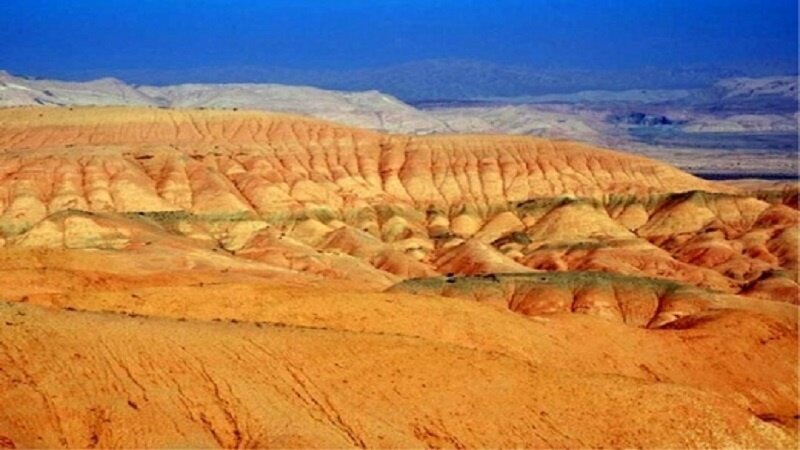Kavir Biosphere Reserve: a trip to incredible biodiversity hot spot

TEHRAN – The Kavir Biosphere Reserve, located south-east of Tehran, is characterized by salt and sandy lands with arid and semi-arid desert vegetation, and is inhabited by steppe communities, creating incredible biodiversity.
Stretching to 686,598 hectares, the Biosphere is located in the Anatolian Iranian Desert. The Kavir plain is composed mainly of flood plains and low mountain ranges.
The Kavir Biosphere Reserve is located south-east of Tehran megacity and encompasses parts of the Great Salt Lake basin and Dasht-e-Kavir. The reserve represents a typical type of Central Asian steppe grassland classified as desert. The central zone contains the oldest Precambrian stones found together with active and semi-active volcanoes.
Some 205 plant species have been identified within the reserve of which 35 are endemic. Based on recent studies, there are 31 mammal species, 131 bird species, 20 reptile species, and only one amphibian (bufo kavirehsis). The reserve served as an important habitat for the Persian zebra (Equus Hemionus Onager), but the species gradually became extinct due to hunting from the late 1970s onwards.
The park is sometimes known as "Little Africa" for its safari-like wildlife, including native goats, sheep, striped hyenas, Indian wolves, gazelles, the rare Asiatic cheetahs, and the Persian leopards. Typically, the area receives around 150 millimeters (6 inches) of rain a year, most of which falls between November and May. The vegetation in the region is adapted to drought and salty soils. To retain water and combat grazing by animals some plants grow leaves with thorns, much like thorn trees and bushes found in Africa desert landscapes.
Namak Lake (Salt Lake) sits immediately outside the park boundaries. This is actually a salt marsh, and water flows into the lake from the north via the Qom River, which also flows through the northern part of Kavir National Park.
Local authorities consider insufficient labor force, excessive use of land to graze cattle, and illegal hunting as the main problems the park is faced with. Despite the vastness of the park, only 30 rangers work there.
There is no local community inside the core and buffer zones, however, traditionally migrant communities make use of pastures. Some cities at the margin of the reserve have experienced rapid population growth because of their proximity to the capital, Tehran. The most important tribes and communities living in the reserve are the Alikani, Aslanlo, Hadavand, Katti, and Kale Kohhi. People in the area earn a living from livestock rearing, agriculture, horticulture, and the sale of handicrafts. Seasonal grazing by the livestock of nomadic communities takes place in the core area.
Why deserts need protection?
Deserts are topographic landscapes that receive little precipitation in a typical year. The threshold is 10 inches, or 25cm. But more than simply having low rainfall, a desert is “arid”, which means a high rate of water loss through plant reclamation (called transpiration) and through evaporation.
Deserts will differ depending on their climate and location and their overall aridity can influence many things, not least of all the ecology, food chain, plant and animal types. High evaporation leaves behind higher salt levels, affecting further which plants can grow and the individual size and the numbers of herbivores that may feed on them and, in turn, carnivores. Some experience vast temperature fluctuations, especially hot deserts which may reach unbearable heat during the day and extreme cold at night. This is because the rock and sand absorb heat during the day and releases it at night. There may also be an extreme variation between warm and cool seasons, including extreme winds and storms due to the mixing of cold and warm air.
Deserts are vitally important to the planetary ecosystem. They cover approximately 1/3 of the dry land of our planet. They are also amongst the most fragile and endangered biomes.
FB/MG
Leave a Comment